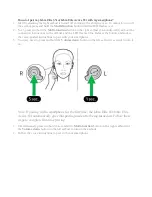
z
Stop using the device or disconnect the power supply in situations where wireless
device is prohibited or using of a wireless device leads to interference or danger.
z
The user who uses an electronic assistant medical-treatment device needs to
confirm with the service center regarding the effects of the radio wave on this
device.
z
Do not take the device to the operating theater, Intensive Care Unit (ICU) or the
Coronary Care Unit (CCU).
z
When using the device maintain distance of 3 cm between your body and the
antenna of the device.
z
In the area with inflammable or explosive materials, turn off your wireless device,
and follow the relevant instructions given in the label, to prevent explosion or fire.
z
Protect the wireless device and its accessories, and use it in a clean and dust-free
environment.Make sure that the wireless device does not come in contact with
flame or a cigarette that is lit.
z
Make sure that the wireless device and its accessories are dry.
z
Do not drop, throw or try to bend your wireless device.
z
Do not place the wireless device and its accessories in high temperature areas.
Environmental Protection
This marking on the device (and any included batteries) indicates
that they should not be disposed of as normal household garbage.
Do not dispose of this device or batteries as unsorted municipal
waste. The device (and any batteries) should be handed over to a
certified collection point for recycling or proper disposal at the end
of their life.
For more detailed information about the recycling of the device or
batteries, please contact your local city office, the household waste
disposal service or the retail store where you purchased this device.
The disposal of this device is subject to the Waste from Electrical
and Electronic Equipment (WEEE) directive of the European
Union. The reason for separating WEEE and batteries from other
waste is to minimize the potential environmental impacts and
effects on human health of any hazardous substances that may be
present.
3








































